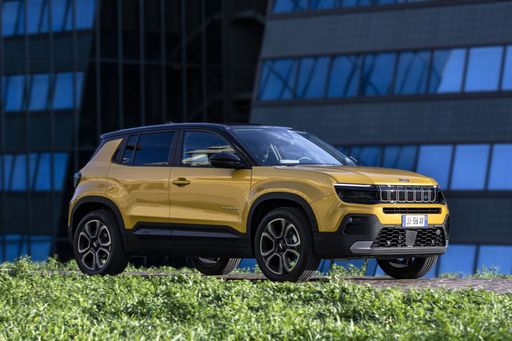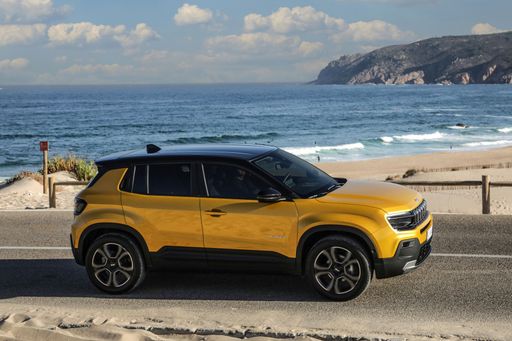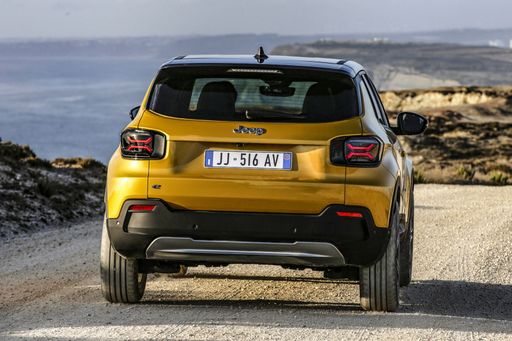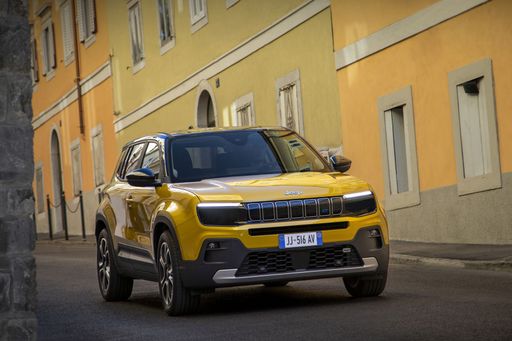Jeep Avenger vs Nissan Micra – Differences & prices compared
Compare performance, boot capacity, efficiency and price at a glance.
Find out which car is the better choice for you – Jeep Avenger or Nissan Micra?
Here’s where it gets real: The technical differences in detail
Costs and Efficiency: Price and efficiency are key factors when choosing a car – and this is often where the real differences emerge.
Jeep Avenger has a minimal advantage in terms of price – it starts at 21900 £, while the Nissan Micra costs 24000 £. That’s a price difference of around 2049 £.
In terms of energy consumption, the advantage goes to the Nissan Micra: with 14.20 kWh per 100 km, it’s minimal more efficient than the Jeep Avenger with 15.50 kWh. That’s a difference of about 1.30 kWh.
As for range, the Nissan Micra performs minimal better – achieving up to 416 km, about 16 km more than the Jeep Avenger.
Engine and Performance: Power, torque and acceleration are the classic benchmarks for car enthusiasts – and here, some clear differences start to show.
When it comes to engine power, the Jeep Avenger has a slight edge – offering 156 HP compared to 150 HP. That’s roughly 6 HP more horsepower.
In acceleration from 0 to 100 km/h, the Nissan Micra is to a small extent quicker – completing the sprint in 8 s, while the Jeep Avenger takes 9 s. That’s about 1 s faster.
In terms of top speed, the Jeep Avenger performs distinct better – reaching 194 km/h, while the Nissan Micra tops out at 150 km/h. The difference is around 44 km/h.
There’s also a difference in torque: the Jeep Avenger pulls minimal stronger with 260 Nm compared to 245 Nm. That’s about 15 Nm difference.
Space and Everyday Use: Beyond pure performance, interior space and usability matter most in daily life. This is where you see which car is more practical and versatile.
Both vehicles offer seating for 5 people.
In curb weight, the Jeep Avenger is clearly perceptible lighter – 1180 kg compared to 1452 kg. The difference is around 272 kg.
In terms of boot space, the Jeep Avenger offers slightly more room – 380 L compared to 326 L. That’s a difference of about 54 L.
In maximum load capacity, the Jeep Avenger performs somewhat better – up to 1277 L, which is about 171 L more than the Nissan Micra.
When it comes to payload, Jeep Avenger somewhat takes the win – 502 kg compared to 408 kg. That’s a difference of about 94 kg.
Our conclusion: The Jeep Avenger proves to be is largely superior and thus becomes our DriveDuel Champion!
Overall, Jeep Avenger is the better all-rounder in this comparison.
Jeep Avenger
The Jeep Avenger is a compact SUV that brings a blend of rugged design and modern technology, making it ideal for both urban and off-road adventures. Its robust build and distinctive styling capture Jeep's iconic spirit while offering a comfortable and refined driving experience. With advanced safety features and a versatile interior, the Avenger caters to a wide range of drivers looking for practicality and excitement.
details @ Stellantis
@ Stellantis
 @ Stellantis
@ Stellantis
 @ Stellantis
@ Stellantis
 @ Stellantis
@ Stellantis
 @ Stellantis
@ Stellantis
Nissan Micra
The Nissan Micra is a compact hatchback renowned for its agile handling and city-friendly dimensions. With a design that blends sleek curves with a practical layout, it appeals to urban drivers who value style and efficiency. Inside, the car offers a surprising amount of room and useful tech features, making it both a convenient and comfortable ride for daily commutes.
details

|
|
|
|
|
Costs and Consumption |
|
|---|---|
|
Price
21900 - 36900 £
|
Price
24000 - 29900 £
|
|
Consumption L/100km
4.9 - 5.7 L
|
Consumption L/100km
-
|
|
Consumption kWh/100km
15.50 kWh
|
Consumption kWh/100km
14.2 - 14.7 kWh
|
|
Electric Range
400 km
|
Electric Range
317 - 416 km
|
|
Battery Capacity
51 kWh
|
Battery Capacity
40 - 52 kWh
|
|
co2
0 - 129 g/km
|
co2
0 g/km
|
|
Fuel tank capacity
44 L
|
Fuel tank capacity
-
|
Dimensions and Body |
|
|---|---|
|
Body Type
SUV
|
Body Type
Hatchback
|
|
Seats
5
|
Seats
5
|
|
Doors
5
|
Doors
5
|
|
Curb weight
1180 - 1520 kg
|
Curb weight
1452 - 1527 kg
|
|
Trunk capacity
325 - 380 L
|
Trunk capacity
326 L
|
|
Length
4084 - 4088 mm
|
Length
3974 mm
|
|
Width
1776 mm
|
Width
1774 mm
|
|
Height
1527 - 1541 mm
|
Height
1490 mm
|
|
Max trunk capacity
1218 - 1277 L
|
Max trunk capacity
1106 L
|
|
Payload
494 - 502 kg
|
Payload
403 - 408 kg
|
Engine and Performance |
|
|---|---|
|
Engine Type
Electric, Petrol, Petrol MHEV
|
Engine Type
Electric
|
|
Transmission
Automatic, Manuel
|
Transmission
Automatic
|
|
Transmission Detail
Reduction Gearbox, Manual Gearbox, Dual-Clutch Automatic
|
Transmission Detail
Reduction Gearbox
|
|
Drive Type
Front-Wheel Drive, All-Wheel Drive
|
Drive Type
Front-Wheel Drive
|
|
Power HP
100 - 156 HP
|
Power HP
122 - 150 HP
|
|
Acceleration 0-100km/h
9 - 10.6 s
|
Acceleration 0-100km/h
8 - 9 s
|
|
Max Speed
150 - 194 km/h
|
Max Speed
150 km/h
|
|
Torque
205 - 260 Nm
|
Torque
225 - 245 Nm
|
|
Number of Cylinders
3
|
Number of Cylinders
-
|
|
Power kW
74 - 115 kW
|
Power kW
90 - 110 kW
|
|
Engine capacity
1199 cm3
|
Engine capacity
-
|
General |
|
|---|---|
|
Model Year
2023 - 2025
|
Model Year
2026
|
|
CO2 Efficiency Class
A, D, C
|
CO2 Efficiency Class
A
|
|
Brand
Jeep
|
Brand
Nissan
|
What drivetrain options does the Jeep Avenger have?
Available configurations include Front-Wheel Drive or All-Wheel Drive.
The prices and data displayed are estimates based on German list prices and may vary by country. This information is not legally binding.
